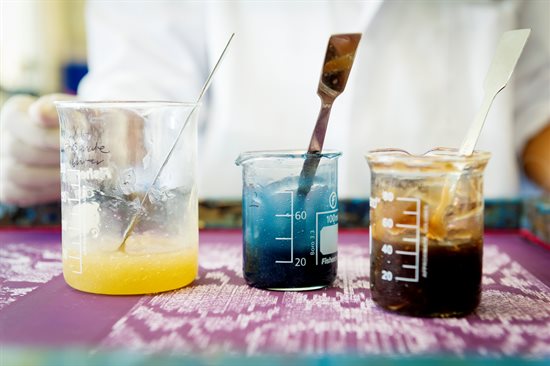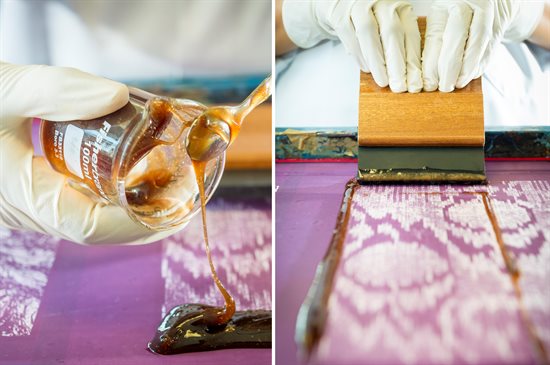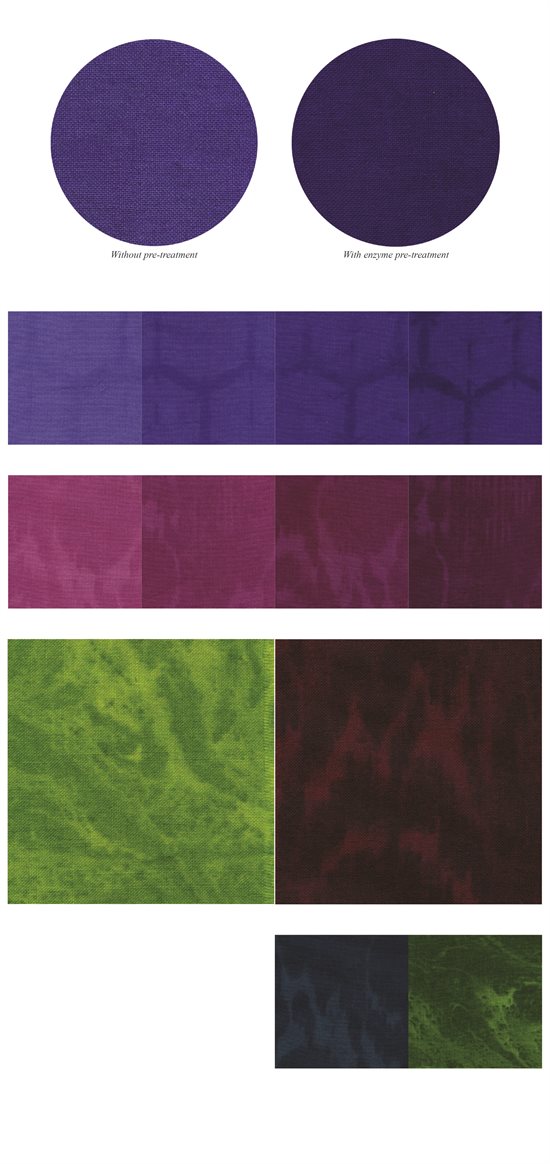Enzyme assisted printing
*Protease is a highly specific enzyme that is capable of breaking down wool fibres into very small fragment proteins or peptides. To date there has been considerable interest in the application of protease to achieve a variety of functional finishing effects on wool. However, techniques developed within this project explore undeveloped opportunities for using protease as a creative design tool to achieve decorative textile surface effects.
Enzyme pre-treated surface patterning explores the innovative application of protease* in-combination with conventional textile printing pastes, to achieve precision controlled decorative surface patterning through differential dye uptake. An enzymatic pre-treatment technique using screen printing has been developed, that enables selective modification of the wool fibre surface, resulting in increased wettability and dye uptake.
During the post dyeing process improvements in colour strength of pre-treated areas are observed and thus exploited for creative application. This process facilitates dyeing of wool at lower temperatures coupled with shorter dyeing times, therefore reducing the overall coloration processing times and energy demands.



Biotechnology for textile coloration and surface pattern
Enzymes (bio-catalysts) were used as innovative biotechnology-based textile design tools for textile coloration and surface patterning. Conventional textile coloration methods and techniques employed to create surface patterning through dyeing and printing systems are known to have a negative impact on the environment due to their resource intensive production processes.
The use of enzymes offers an attractive alternative, with potential economic and environmental benefits. Research presented demonstrates the ability of two specific enzymes, laccase and protease, as creative tools to achieve, through controlled application, innovative coloration or decorative surface effects on textiles.
The results obtained from this study clearly demonstrate important advantages over conventional processing methods, for instance the use of simpler and milder operating conditions that eliminate additional chemical use and reduce energy consumption.